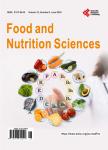Comparison of Sensory Qualities of Geographically Paired Organic and Conventional Red Wines from the Southwestern US with Differing Total Polyphenol Concentrations: A Randomized Pilot Study
Comparison of Sensory Qualities of Geographically Paired Organic and Conventional Red Wines from the Southwestern US with Differing Total Polyphenol Concentrations: A Randomized Pilot Study作者机构:不详
出 版 物:《Food and Nutrition Sciences》 (食品与营养科学(英文))
年 卷 期:2011年第2卷第10期
页 面:1150-1159页
学科分类:1002[医学-临床医学] 100214[医学-肿瘤学] 10[医学]
主 题:Organic Wine Conventional Polyphenols Sensory Qualities
摘 要:Dietary polyphenols, or phenolic compounds, are numerous, diverse, and ubiquitous phytochemicals occurring throughout the plant kingdom. They are important components of the human diet because of their capacity to reduce the risk of chronic diseases such as cardiovascular disease and cancer. In plants, polyphenols contribute to resistance to pathogens due to their potent astringency and function as phytoalexins. As a result, organic grapevines grown with reduced pesticides may be more stressed by pathogens than conventionally grown grapevines and presumably produce more polyphenols. Since polyphenols also play an important role in the sensory qualities of fruits and wines particularly involving astringency and bitterness, there may be differences that affect sensory perceptions of wine. This establishes a conundrum where dietary polyphenols are healthful but potentially *** recruited and randomized 18 female participants (21 - 50 y) to one of five groups (3 - 4 per group). Each group evaluated the sensory qualities of a geographically paired organic (OW) and conventional wine (CW) and an artificially colored white wine placebo (PW) with significantly differing total polyphenol concentrations (TP). Participants reported for three visits (one wine per visit) where they consumed 5 ounces (150 mL) of wine over 15 minutes while completing the sensory survey. Sensory evaluations based on a Likert-type scale included visual, aroma, and taste perceptions and overall impressions (scale 0 - 10). In two wine pairs, the OW contained significantly more TP (3.49 and 5.86 g/L) than the respective CW (2.63 and 4.63 g/L). In two other wine pairs both produced by sustainable viticulture, the CW (5.23 and 8.38 g/L) contained sig- nificantly more TP than OW (4.55 and 3.70 g/L) and in one set the amounts were equivalent (4.10 and 4.17 g/L). The five PW averaged 1.26 ± 0.20 g/L. Although there were significant differences in TP content of test wines, the results indicated that



